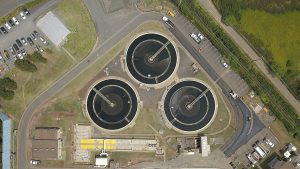More wastewater sampling work, “Wastewater Analysis of SARS-CoV-2 as a Predictive Metric of Positivity Rate for a Major Metropolis“. This one is a larger-scale study in a big city that found wastewater spikes in SARS-CoV-2 to present clinical positives by 2 weeks which is a huge lead time and of major significance for getting a …
Hi MoBE blog, I just wanted to share a piece that I recently wrote for a Special Issue on the journal Microbial Biotechnology. The Special issue presents a collection articles about “The contribution of microbial biotechnology to sustainable development goals”, and the title of my article is “Microbial communities as biosensors for monitoring urban …
Microbes and buildings The Microbiome of Green Design: Sustainable building practices may have unforeseen consequences for microbial communities and human health – Carolyn Beans – BioScience ($40 for 1 day) Just as our bodies teem with microbial life, so, too, do the homes, offices, schools, and other indoor spaces where we spend the majority of our …
Microbes and citizen science Video: Citizen Science and Mapping the Microbiome – Eric J. Topol interviews Jessica Richman – Medscape (OA) In this One-on-One, Medscape editor-in-chief Eric Topol talks with Jessica Richman about the value of citizen science as well as her company, uBiome, which provides microbiome analyses to consumers and plans to begin providing …
Ok I saw this Tweet and I thought it sounded cool: Autonomous Sewer Robots Live-Stream Neighborhood Microbiome Data – Nickolaus Hines https://t.co/fr8Xfs8XxQ pic.twitter.com/e5mDTGU44Y – Elisabeth Bik (@MicrobiomDigest) May 5, 2016 And definitely worth looking into in more detail. And, well, after looking I still think it is cool but not quite what the headline suggests. …
A recent study form Ling et al explored microbial community succession on concrete. They examined the concrete in two sewage manholes over a year using 16S rRNA sequencing. Concrete is a huge part of urban environments, and corrosive microbes eat it away. This causes structural damage, which is especially unwanted in sewage systems. The abstract for the …
A recent paper by Newton et al compares the microbial community composition in human stool to that of the sewage sludge that it inevitably ends up in. And surprise! The communities looked really similar. Sewage species recaptured most of the human stool species, and was essentially a medley of various gut microbes. The really cool part is how the …
Occasionally I come across a news story related to the microbiology of the built environment that I really want to blog about… but don’t know what to say. Here is such a story about a ski resort in Arizona using 100% treated sewage water for snow making and the concerns associated with that. Blog post …
Viruses often tend to be overlooked in microbiological surveys of the built environment. This is because they don’t show up in either culture-based methods (which are specific to bacteria or fungi) or the commonly employed newer technique of ribosomal RNA sequencing (because viruses don’t have ribosomes). Even in metagenomic analyses where viral sequences are present …


